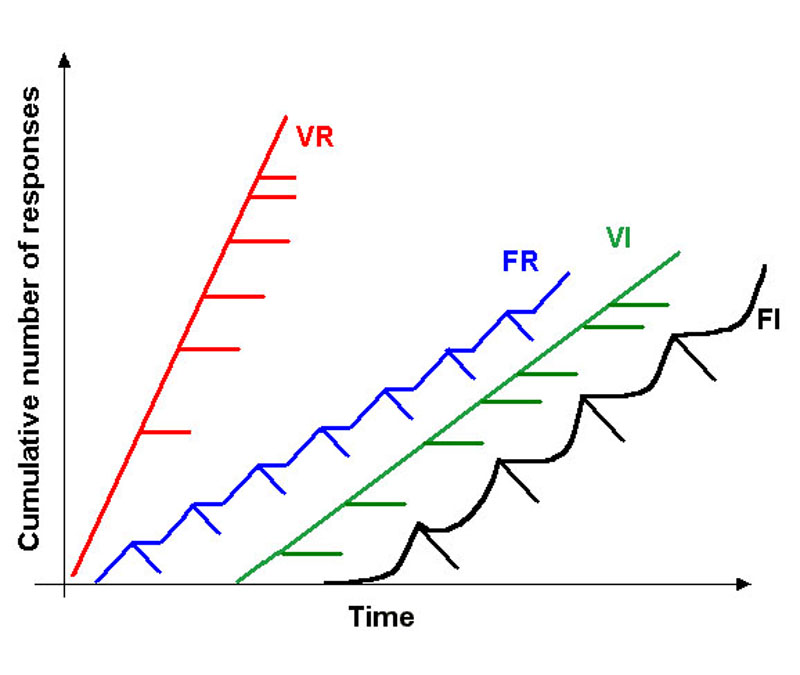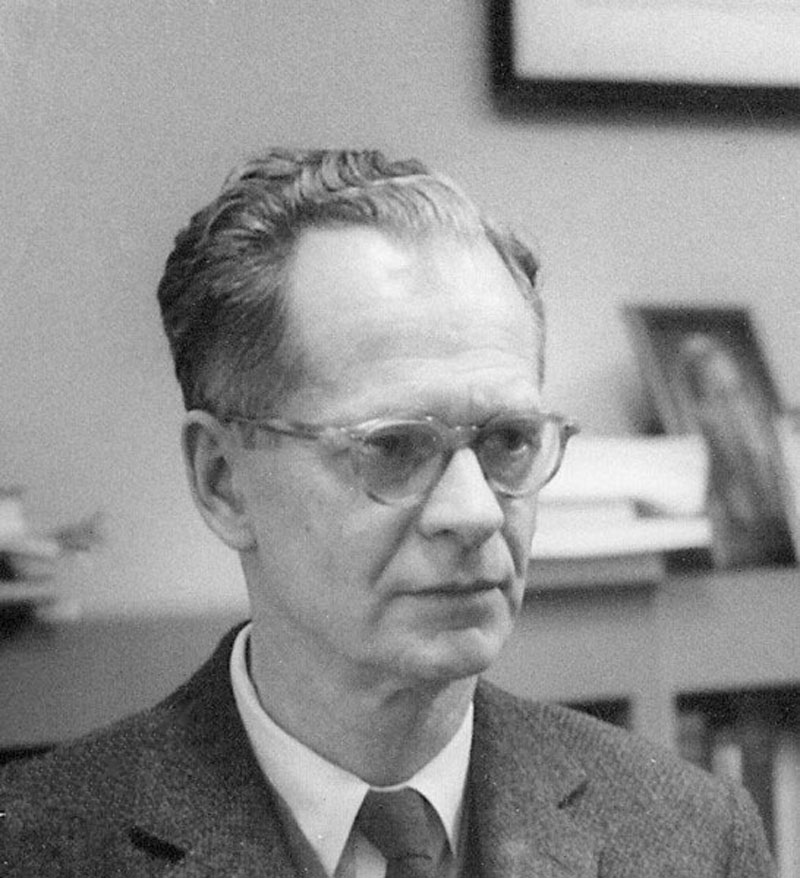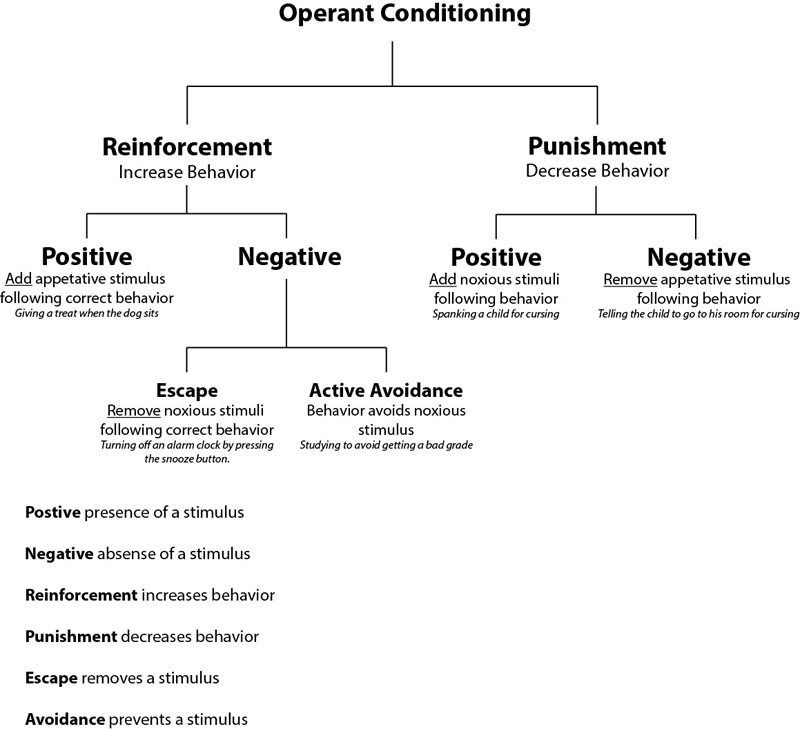B. F. Skinner and Reinforcement
- B. F. Skinner was an American psychologist who considered free will an illusion and human action dependent on consequences of previous actions.
- Behaviorism is an approach to psychology that emerged in the early twentieth century with the primary tenet that psychology should have only concern itself with observable events.
- The Skinner box is a laboratory apparatus used to study animal behavior which permits experimenters to study behavior conditioning by teaching a subject animal to perform certain actions (like pressing a lever) in response to specific stimuli, such as a light or sound signal.
- Operant conditioning is a learning process in which behavior is sensitive to, or controlled by its consequences.
- Reinforcement is a consequence that will strengthen an organism's future behavior whenever that behavior is preceded by a specific antecedent stimulus. This strengthening effect may be measured as a higher frequency of behavior or shorter latency.
- Positive reinforcement occurs when a desirable event or stimulus is presented as a consequence of a behavior and the behavior increases.
- Negative reinforcement occurs when the rate of a behavior increases because an aversive event or stimulus is removed or prevented from happening.
- Positive punishment occurs when a response produces a stimulus and that responses decreases in probability in the future in similar circumstances.
- Negative punishment occurs when a response produces the removal of a stimulus and that response decreases in probability in the future in similar circumstances.
- In operant conditioning, a discriminant stimulus is a stimulus that serves as a signal for the presence of reinforcement.
- In operant conditioning a schedule of reinforcement specifies the rules that determine how and when a response will be followed by a reinforcer.
- With a fixed ratio schedule, reinforcement is delivered after every nth response.
- With a variable ratio schedule, reinforcement is delivered on average every nth response, but not always on the nth response.
- In token economies, secondary reinforcers are neutral objects that can be traded for primary reinforcers, which are naturally pleasurable.
- With a continuous reinforcement schedule every occurrence of the instrumental response (desired response) is followed by the reinforcer.
- With a fixed interval schedule, reinforcement is delivered after n amount of time.
- With a variable interval schedule, reinforcement is delivered on average after n amount of time, but not always exactly n amount of time.
- In escape learning, a behavior terminates an (aversive) stimulus.
- In avoidance learning, behavior is maintained that prevents a stimulus.
- Two-process theory seeks to explain discriminated avoidance learning, in which an organism learns to avoid an aversive stimulus by escaping from a signal for that stimulus. Two processes are involved: classical conditioning of the signal followed by operant conditioning of the escape response.

A chart demonstrating the different response rate of the four simple schedules of reinforcement, each hatch mark designates a reinforcer being given.

